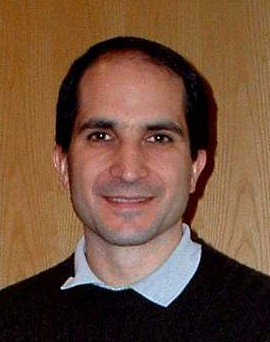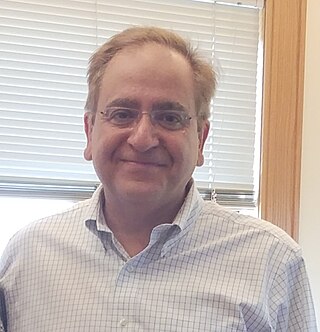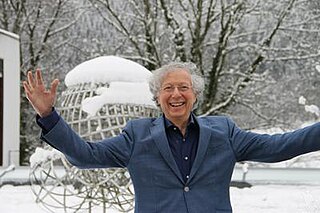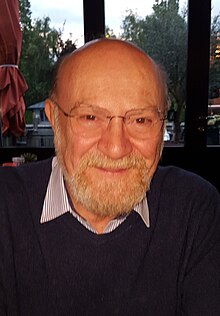Arthur Strong Wightman was an American mathematical physicist. He was one of the founders of the axiomatic approach to quantum field theory, and originated the set of Wightman axioms. With his rigorous treatment of quantum field theories, he promoted research on various aspects of modern mathematical physics.

Martin Charles Gutzwiller was a Swiss-American physicist, known for his work on field theory, quantum chaos, and complex systems. He spent most of his career at IBM Research, and was also an adjunct professor of physics at Yale University.

Kenneth Geddes "Ken" Wilson was an American theoretical physicist and a pioneer in using computers for studying particle physics. He was awarded the 1982 Nobel Prize in Physics for his work on phase transitions—illuminating the subtle essence of phenomena like melting ice and emerging magnetism. It was embodied in his fundamental work on the renormalization group.

Juan Martín Maldacena is an Argentine theoretical physicist and the Carl P. Feinberg Professor in the School of Natural Sciences at the Institute for Advanced Study, Princeton. He has made significant contributions to the foundations of string theory and quantum gravity. His most famous discovery is the AdS/CFT correspondence, a realization of the holographic principle in string theory.

Cumrun Vafa is an Iranian-American theoretical physicist and the Hollis Professor of Mathematics and Natural Philosophy at Harvard University.

Yakov Grigorevich Sinai is a Russian–American mathematician known for his work on dynamical systems. He contributed to the modern metric theory of dynamical systems and connected the world of deterministic (dynamical) systems with the world of probabilistic (stochastic) systems. He has also worked on mathematical physics and probability theory. His efforts have provided the groundwork for advances in the physical sciences.

Barry Martin Simon is an American mathematical physicist and was the IBM professor of Mathematics and Theoretical Physics at Caltech, known for his prolific contributions in spectral theory, functional analysis, and nonrelativistic quantum mechanics, including the connections to atomic and molecular physics. He has authored more than 400 publications on mathematics and physics.

David Pierre Ruelle is a Belgian and naturalized French mathematical physicist. He has worked on statistical physics and dynamical systems. With Floris Takens, Ruelle coined the term strange attractor, and developed a new theory of turbulence.

Ludvig Dmitrievich Faddeev was a Soviet and Russian mathematical physicist. He is known for the discovery of the Faddeev equations in the quantum-mechanical three-body problem and for the development of path-integral methods in the quantization of non-abelian gauge field theories, including the introduction of the Faddeev–Popov ghosts. He led the Leningrad School, in which he along with many of his students developed the quantum inverse scattering method for studying quantum integrable systems in one space and one time dimension. This work led to the invention of quantum groups by Drinfeld and Jimbo.

Giovanni Jona-Lasinio, sometimes called Gianni Jona, is an Italian theoretical physicist, best known for his works on quantum field theory and statistical mechanics. He pioneered research concerning spontaneous symmetry breaking, and the Nambu–Jona-Lasinio model is named after him. When Yoichiro Nambu received the Nobel Prize, Jona-Lasinio gave the Nobel Lecture in his place, as a recognition from Nambu for their joint work. At present, he holds a faculty position in the Physics Department of Sapienza University of Rome, and is a full member of the Accademia dei Lincei.

Arthur Michael Jaffe is an American mathematical physicist at Harvard University, where in 1985 he succeeded George Mackey as the Landon T. Clay Professor of Mathematics and Theoretical Science.

Giorgio Parisi is an Italian theoretical physicist, whose research has focused on quantum field theory, statistical mechanics and complex systems. His best known contributions are the QCD evolution equations for parton densities, obtained with Guido Altarelli, known as the Altarelli–Parisi or DGLAP equations, the exact solution of the Sherrington–Kirkpatrick model of spin glasses, the Kardar–Parisi–Zhang equation describing dynamic scaling of growing interfaces, and the study of whirling flocks of birds. He was awarded the 2021 Nobel Prize in Physics jointly with Klaus Hasselmann and Syukuro Manabe for groundbreaking contributions to theory of complex systems, in particular "for the discovery of the interplay of disorder and fluctuations in physical systems from atomic to planetary scales".
Daniel Zissel Freedman is an American theoretical physicist. He is an Emeritus Professor of Physics and Applied Mathematics at the Massachusetts Institute of Technology (MIT), and is currently a visiting professor at Stanford University. He is mainly known for his work in supergravity. He is a member of the U. S. National Academy of Sciences.

Barry Malcolm McCoy is an American physicist, known for his contributions to classical statistical mechanics, integrable models and conformal field theories.
Alexander Borisovich Zamolodchikov is a Russian physicist, known for his contributions to conformal field theory, statistical mechanics, string theory and condensed matter physics.

Jürg Martin Fröhlich is a Swiss mathematician and theoretical physicist. He is best known for introducing rigorous techniques for the analysis of statistical mechanics models, in particular continuous symmetry breaking, and for pioneering the study of topological phases of matter using low-energy effective field theories.
Nikita Alexandrovich Nekrasov is a Russian mathematical and theoretical physicist at the Simons Center for Geometry and Physics and C.N.Yang Institute for Theoretical Physics at Stony Brook University in New York, and a Professor of the Russian Academy of Sciences.
Thomas C. Spencer is an American mathematical physicist, known in particular for important contributions to constructive quantum field theory, statistical mechanics, and spectral theory of random operators. He is an emeritus faculty member at the Institute for Advanced Study.
Antti Kupiainen is a Finnish mathematical physicist.

Tetsuji Miwa is a Japanese mathematician, specializing in mathematical physics.














